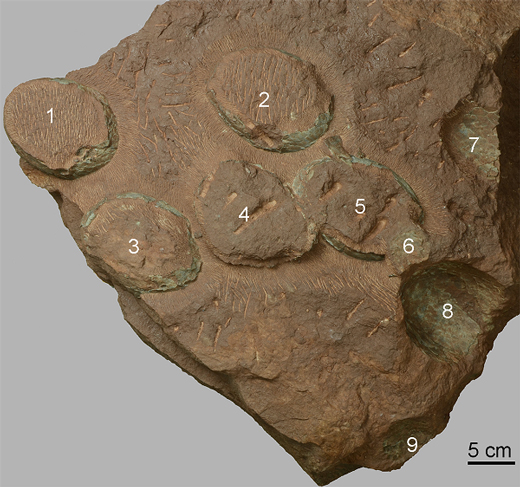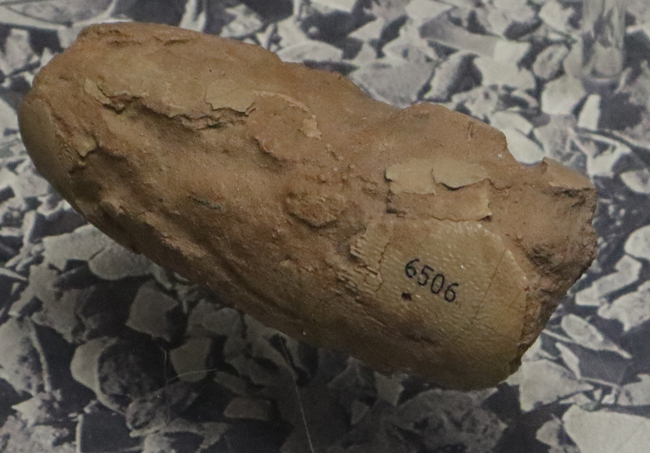Umbellaoolithus xiuningensis “Eggciting” Fossil Egg Discovery
Chinese scientists have announced that a new type of fossilised dinosaur egg has been found. A single nest, discovered in 2011, contains the remains of at least nine dinosaur eggs. Their unique shape and surface structure makes them distinguishable from all other known dinosaur eggs, this has led to the establishment of a new oospecies. An oospecies is the equivalent to a species in taxonomy, the “double o” in front of the taxonomic rank indicates that the term is being used to classify fossil eggs. Several dinosaur oogenera and oospecies are known, but since this fossil nest and its contents does not resemble anything found before, a new oospecies has been erected.
The Fossilised Dinosaur Eggs were Found in Upper Cretaceous Strata
Picture credit: L. Feng/Chinese Science Bulletin
Dinosaur Egg Study
The photograph (above) shows the clutch of eggs, they have been numbered for reference purposes. Numbers 1-5 are the most complete, 6 is a fragment of eggshell resting on egg number 5, whilst egg numbers 7 through to 9 represent the preserved outline of eggs. The new species Umbellaoolithus xiuningensis was named after Xiuning county in Anhui Province (eastern China), where the egg fossil discovery was made.
From the Upper Cretaceous Huizhou Formation
The oval eggs are arranged along the long axis of all the eggs parallel to each other and not at the same horizontal level within the clutch, this nest arrangement, if an accurate depiction of the actual eggs after laying and not resulting from taphonomy, is very different from the elongated pairs, regular arrangement and radial orientation seen in other fossilised dinosaur nests (examples being the oogenera Macroelongatoolithidae and Elongatoolithidae).
A Typical Elongate Theropod Dinosaur Egg
Picture credit: Everything Dinosaur
With an average diameter of just under fourteen centimetres (13.86 cm), it is not known what type of dinosaur laid the eggs. The discovery was reported in an article in the Chinese Science Bulletin by Dr Huang Jiandong, from the Anhui Geological Museum and Wang Qiang, a deputy researcher at the Chinese Academy of Sciences.
Visit the Everything Dinosaur website: Everything Dinosaur.








Leave A Comment